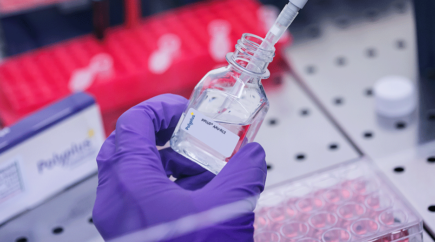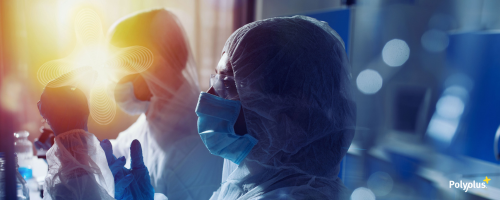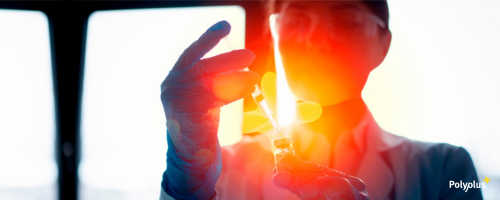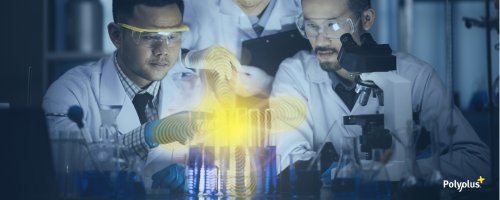pPLUS® AAV-RC range is a set of ready-to-use RepCap plasmids for AAV production of various serotypes through triple transfection. Optimized for use w...

Meet Polyplus at booth #1230 during the ASGCT in Baltimore, US from 7th - 11th May 2024. Don't miss the opportunity to hear our talk by our expert Géradine Guerin Peyrou on what tools are available to improve AAV productivity and quality in 2024 and check out our series of Poster Presentation on how Lipid nanoparticles (LNP) have demonstrated high efficiency delivering RNA therapeutics in vivo and How to Enhance AAV productivity through our Helper plasmids and to optimize Lentiviral vector production with the use of CAR-T cell.
 |
Géradine Guerin Peyrou – Marketing & Communication Director |
Talk : In 2024, what tools are available to improve AAV productivity and quality | Thursday 9th May 8:00 – 8:30 AM
Talk Summary : Enhancing AAV productivity and quality is key to enable more Gene Therapy products to reach commercialization. There are several approaches to improve productivity, of which a cost-effective approach whereby early on during process development, multiple parameters can be optimized thanks to DOE at both Upstream and Downstream levels. For Upstream processes, being able to optimize the triple AAV plasmid transfection step is key in reaching higher yields, especially at larger scale. Improving the quality of the produced AAV is critical to ensure patient safety, and can be achieved though process optimization.
Lipid nanoparticles (LNP) have demonstrated high efficiency delivering RNA therapeutics in vivo. However, the properties of such nanoparticles obtained with conventional ionizable lipids are often hard to modulate, and especially their biodistribution profile. Such ionizable lipid-based nanoparticles often predominantly end up targeting the liver. One of the current challenges in the field consists of adjusting the particle chemical composition to the targeted application. Here, we have characterized a library of 10 innovative imidazolium-based cationic lipids as key component of cationic LNPs (cLNP). We disclose their chemical structures and demonstrate their efficacy generating LNPs through characterization of their hydrodynamic diameters, Zeta potentials and encapsulation efficiencies. The resulting particles display high transfection efficiencies and have little to no impact on cell viability in vitro, on HEK-293 and CaCo-2 cell lines. In vivo, the biodistribution of the cLNP highly depends on the cationic lipid chemical structures, targeting mainly lungs and spleen. Among this library, we have identified one cationic lipid as a potent additive in Moderna‘s Spikevax formulation.
Harnessing rAAVs as viral vectors for therapeutic transgene delivery still requires improvements in yields and specificity to lower vector doses, and therefore manufacturing cost, as well as to improve patient safety. To this end, our research is focused on developing novel technologies to ensure manufacturing of high yielding rAAV particles using transient transfection, as well as enhancing viral particles quality and specificity. Here we present our state-of-the art approach to design new helper plasmids (pHelpers) with the aim of improving both the genomic titers and the infectivity (TU/mL) of the viral particle obtained from suspension cultures. We took the opportunity to exploit our proprietary DNA assembly method technology to explore the synergies of multiple genetic features modularly assembled in synthetic plasmids. We then explored how plasmid ratio optimization could further enhance AAV productivity through a Design of Experiment with a mixture design approach. This work led us to identifying plasmid ratios improving both VG titers and Full/Empty Ratios.
Gene modified cell therapy such as CAR-T cells is one of the most promising advanced therapy medicinal products (ATMP) to fight against cancer. These therapies typically use lentiviral vectors to transfer a gene of interest and modify patient’s cells. All the raw material used during the lentiviral vector manufacturing must be carefully selected based on different parameters such as quality, performance, supplier, etc.
In this project, we generated CAR-T cells based on different plasmid constructs expressing a fusion protein CAR to track transduction efficiency. We first built different plasmid constructs using the plasmid engineering service from Polyplus, then encapsulate this gene of interest using a lentiviral vector produced with FectoVIR®-LV, transduce CD4+ CD8+ T cells from peripheral blood with this lentiviral vector, expand them for 12 days and finally test the efficiency of the transduced CAR-T cells using a killing assay.

Success of Gene and Cell Therapies is dependent on efficient production of viral vectors that require optimized transfection reagents and viral vector engineering

RNA/DNA in vivo delivery is the most powerful alternative to viral vectors for nucleic acid-based therapies. They offer substantial advantages in terms of reliability,safety and costs for nucleic-acid based therapies

Broad range of solutions is needed for manufacturing of functional proteins or antibodies at the desired scale in bacteria, yeast and mammalian cell expression systems

Optimised plasmid engineering and specific transfection reagents are key to enable protein expression in a wide range of adherent and suspension mammalian cell types